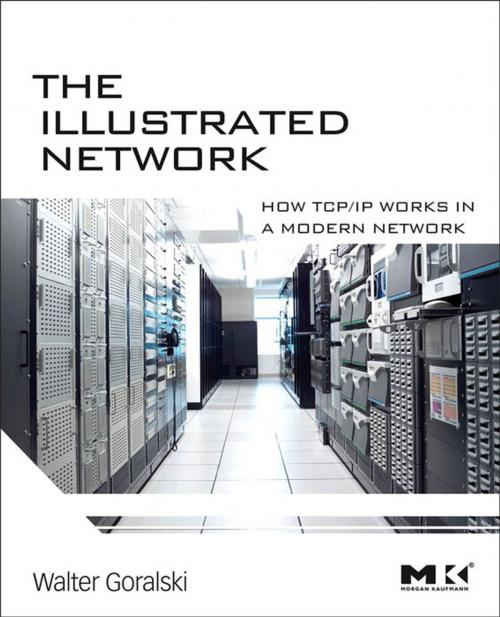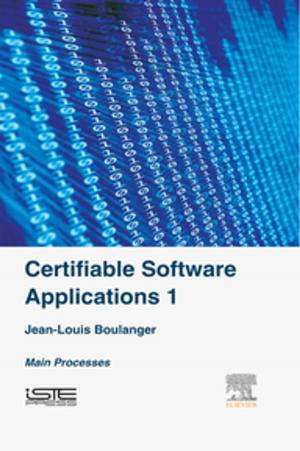The Illustrated Network
How TCP/IP Works in a Modern Network
Nonfiction, Computers, Networking & Communications, Network Protocols, General Computing| Author: | Walter Goralski | ISBN: | 9780080923222 |
| Publisher: | Elsevier Science | Publication: | October 1, 2009 |
| Imprint: | Morgan Kaufmann | Language: | English |
| Author: | Walter Goralski |
| ISBN: | 9780080923222 |
| Publisher: | Elsevier Science |
| Publication: | October 1, 2009 |
| Imprint: | Morgan Kaufmann |
| Language: | English |
In 1994, W. Richard Stevens and Addison-Wesley published a networking classic: TCP/IP Illustrated. The model for that book was a brilliant, unfettered approach to networking concepts that has proven itself over time to be popular with readers of beginning to intermediate networking knowledge. The Illustrated Network takes this time-honored approach and modernizes it by creating not only a much larger and more complicated network, but also by incorporating all the networking advancements that have taken place since the mid-1990s, which are many.
This book takes the popular Stevens approach and modernizes it, employing 2008 equipment, operating systems, and router vendors. It presents an ?illustrated? explanation of how TCP/IP works with consistent examples from a real, working network configuration that includes servers, routers, and workstations. Diagnostic traces allow the reader to follow the discussion with unprecedented clarity and precision. True to the title of the book, there are 330+ diagrams and screen shots, as well as topology diagrams and a unique repeating chapter opening diagram. Illustrations are also used as end-of-chapter questions. A complete and modern network was assembled to write this book, with all the material coming from real objects connected and running on the network, not assumptions. Presents a real world networking scenario the way the reader sees them in a device-agnostic world. Doesn't preach one platform or the other.
Here are ten key differences between the two:
Stevens Goralski's
Older operating systems (AIX,svr4,etc.) Newer OSs (XP, Linux, FreeBSD, etc.)
Two routers (Cisco, Telebit (obsolete)) Two routers (M-series, J-series)
Slow Ethernet and SLIP link Fast Ethernet, Gigabit Ethernet, and SONET/SDH links (modern)
Tcpdump for traces Newer, better utility to capture traces (Ethereal, now has
a new name!)
No IPSec IPSec
No multicast Multicast
No router security discussed Firewall routers detailed
No Web Full Web browser HTML consideration
No IPv6 IPv6 overview
Few configuration details More configuration details (ie, SSH, SSL, MPLS, ATM/FR consideration, wireless LANS, OSPF and BGP routing protocols
- New Modern Approach to Popular Topic Adopts the popular Stevens approach and modernizes it, giving the reader insights into the most up-to-date network equipment, operating systems, and router vendors.
- Shows and Tells Presents an illustrated explanation of how TCP/IP works with consistent examples from a real, working network configuration that includes servers, routers, and workstations, allowing the reader to follow the discussion with unprecedented clarity and precision.
- Over 330 Illustrations True to the title, there are 330 diagrams, screen shots, topology diagrams, and a unique repeating chapter opening diagram to reinforce concepts
- Based on Actual Networks A complete and modern network was assembled to write this book, with all the material coming from real objects connected and running on the network, bringing the real world, not theory, into sharp focus.
In 1994, W. Richard Stevens and Addison-Wesley published a networking classic: TCP/IP Illustrated. The model for that book was a brilliant, unfettered approach to networking concepts that has proven itself over time to be popular with readers of beginning to intermediate networking knowledge. The Illustrated Network takes this time-honored approach and modernizes it by creating not only a much larger and more complicated network, but also by incorporating all the networking advancements that have taken place since the mid-1990s, which are many.
This book takes the popular Stevens approach and modernizes it, employing 2008 equipment, operating systems, and router vendors. It presents an ?illustrated? explanation of how TCP/IP works with consistent examples from a real, working network configuration that includes servers, routers, and workstations. Diagnostic traces allow the reader to follow the discussion with unprecedented clarity and precision. True to the title of the book, there are 330+ diagrams and screen shots, as well as topology diagrams and a unique repeating chapter opening diagram. Illustrations are also used as end-of-chapter questions. A complete and modern network was assembled to write this book, with all the material coming from real objects connected and running on the network, not assumptions. Presents a real world networking scenario the way the reader sees them in a device-agnostic world. Doesn't preach one platform or the other.
Here are ten key differences between the two:
Stevens Goralski's
Older operating systems (AIX,svr4,etc.) Newer OSs (XP, Linux, FreeBSD, etc.)
Two routers (Cisco, Telebit (obsolete)) Two routers (M-series, J-series)
Slow Ethernet and SLIP link Fast Ethernet, Gigabit Ethernet, and SONET/SDH links (modern)
Tcpdump for traces Newer, better utility to capture traces (Ethereal, now has
a new name!)
No IPSec IPSec
No multicast Multicast
No router security discussed Firewall routers detailed
No Web Full Web browser HTML consideration
No IPv6 IPv6 overview
Few configuration details More configuration details (ie, SSH, SSL, MPLS, ATM/FR consideration, wireless LANS, OSPF and BGP routing protocols
- New Modern Approach to Popular Topic Adopts the popular Stevens approach and modernizes it, giving the reader insights into the most up-to-date network equipment, operating systems, and router vendors.
- Shows and Tells Presents an illustrated explanation of how TCP/IP works with consistent examples from a real, working network configuration that includes servers, routers, and workstations, allowing the reader to follow the discussion with unprecedented clarity and precision.
- Over 330 Illustrations True to the title, there are 330 diagrams, screen shots, topology diagrams, and a unique repeating chapter opening diagram to reinforce concepts
- Based on Actual Networks A complete and modern network was assembled to write this book, with all the material coming from real objects connected and running on the network, bringing the real world, not theory, into sharp focus.















